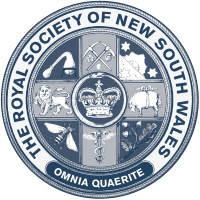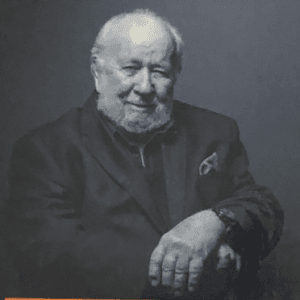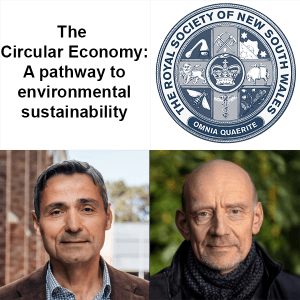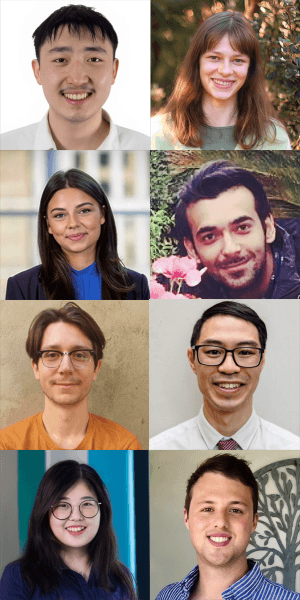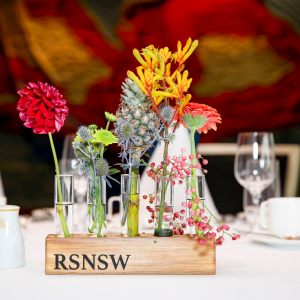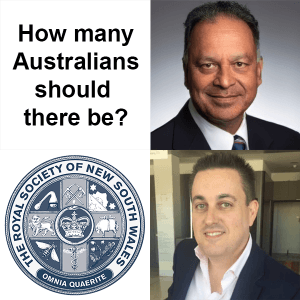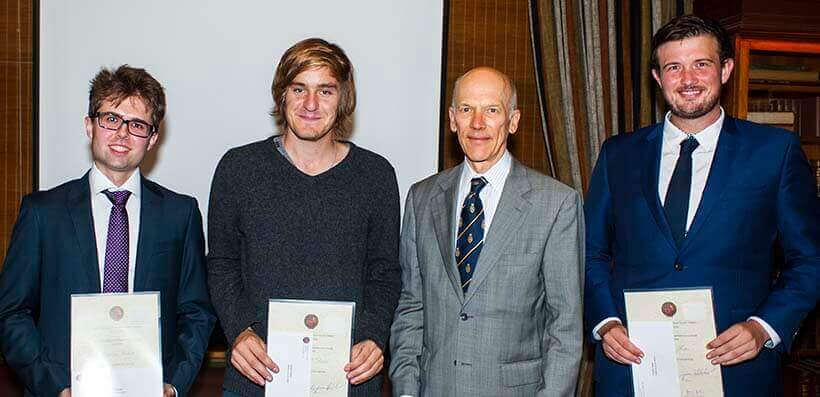
Note: the OGM number 1239 is not used for administrative reasons.
Royal Society of New South Wales Scholarship presentations

The scholarship winners with the President of the Royal Society of NSW, Dr Donald Hector
L-R: Yevgeny Stadnik, Adam Dudek, Don Hector, Charles Forster
Wednesday 3 February 2016
Union, University and Schools Club, 25 Bent Street, Sydney
The Royal Society of New South Wales has a long tradition of encouraging and supporting scientific research and leading intellectual life in the State. The Council of the Royal Society has established the Royal Society of New South Wales Scholarships in order to acknowledge outstanding achievements by young researchers. The talks this evening were by the 2015 scholarship winners
“Problems and prime numbers” ─ Adrian Dudek
Adrian Dudek works in the field of number theory with Dr Trudgian at the Australian National University. Since ancient times, the prime numbers have attracted the attention of curious mathematicians (and other characters) for one reason: it’s extraordinarily difficult to answer questions regarding the primes. For instance, if you were to write down a list of the first 100 prime numbers, you would not be able to find an intelligible pattern. That being said, some recent spectacular advances in number theory mean that the prime numbers are becoming less elusive and more understandable. In his talk, Adrian recounted some of the history of this ancient branch of mathematics, whilst describing some of his own results in this area.
“How old are flowers? A phylogenomic investigation of the angiosperm evolutionary timescale” ─ Charles Forster
Charles Forster is a botanist working with the RSNSW Edgeworth David medallist Simon Ho at The University of Sydney. Resolving the evolutionary timescale of flowering plants (Angiospermae) is crucial for understanding how these plants came to dominate habitats globally, and how this shaped the evolution of other organisms. In the absence of fossil data for many angiosperm lineages, molecular dating provides an important tool for estimating the evolutionary timescale of this group. Differences in sampling of taxa, genes, and fossil calibrations, along with the use of different molecular dating methods, have led to widely disparate date estimates. By analysing chloroplast genomes from 195 taxa with 37 fossil calibrations, and testing the sensitivity of our results to a range of priors and evolutionary models, Charles has provided the most comprehensive combination of analyses of the angiosperm evolutionary timescale so far. The results he has obtained reflect the increasingly common finding that molecular dating estimates predate the oldest fossils by a non-trivial amount of time, up to 70 million years when considering mean estimates.
“Manifestations of Dark Matter and variation of fundamental constants in atoms and astrophysical phenomena” ─ Yevgeny Stadnik
Yevgeny Stadnik works with Professor Flambaum FRSN at UNSW. Astrophysical observations indicate that 85% of the matter content in the Universe is due to dark matter, the identity and properties of which remain a mystery. Recently, our group at UNSW has proposed new, high-precision methods to directly detect dark matter using tabletop experiments in the laboratory. In his talk, Yevgeny presented an overview of some of the group’s recently proposed methods and breakthrough results that have been obtained using these methods, as well as ongoing efforts with a number of experimental groups and collaborations from around the world to search for dark matter at an unprecedented level of accuracy using our proposed new methods.
